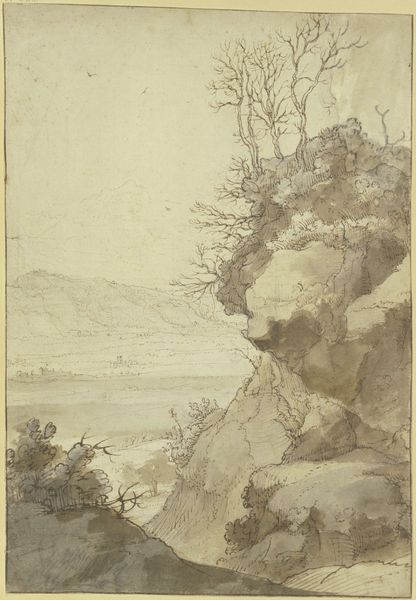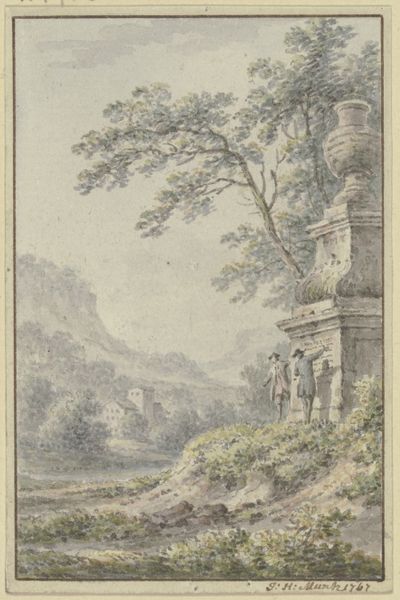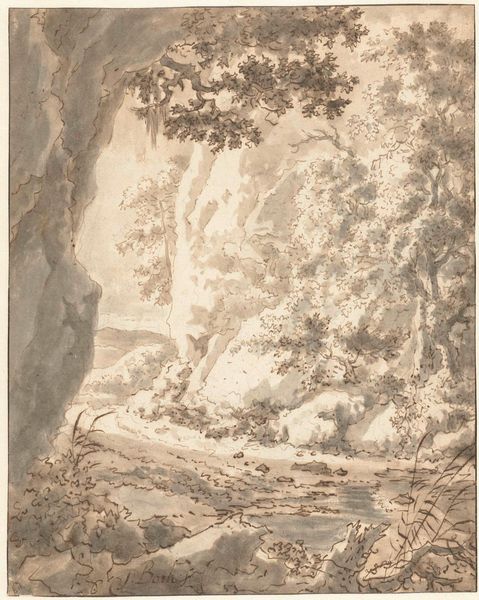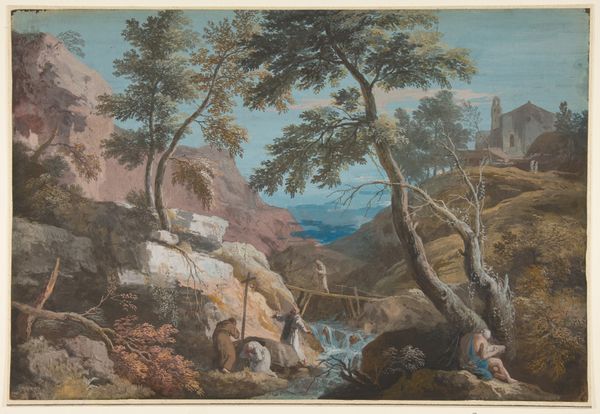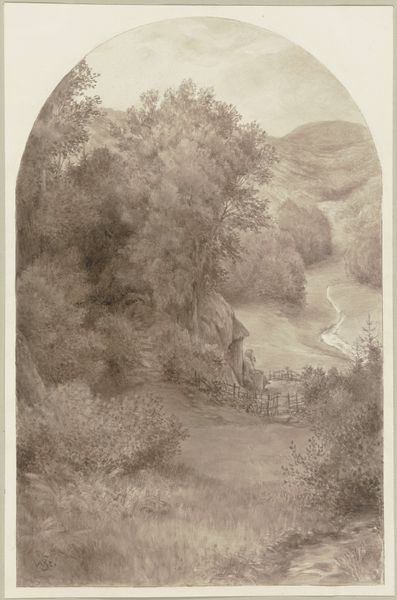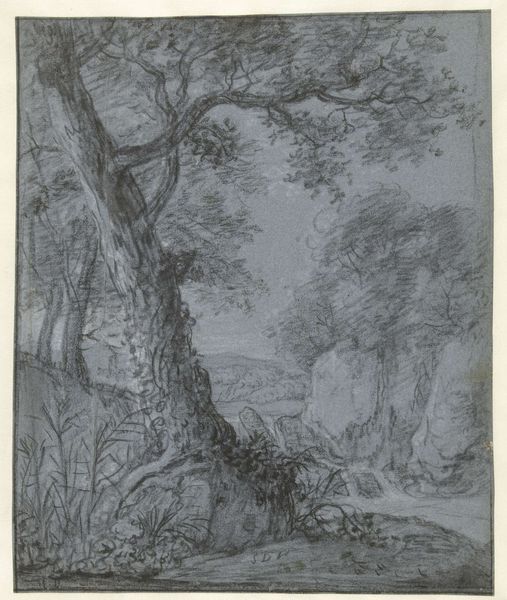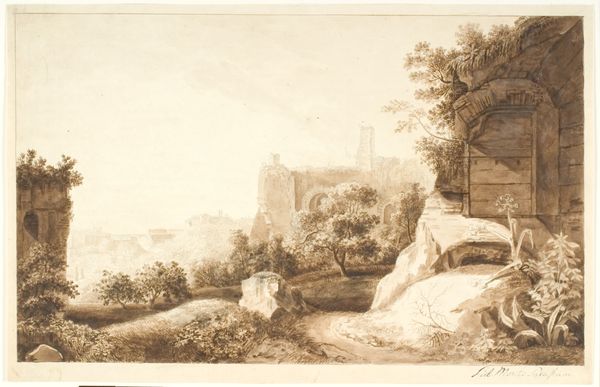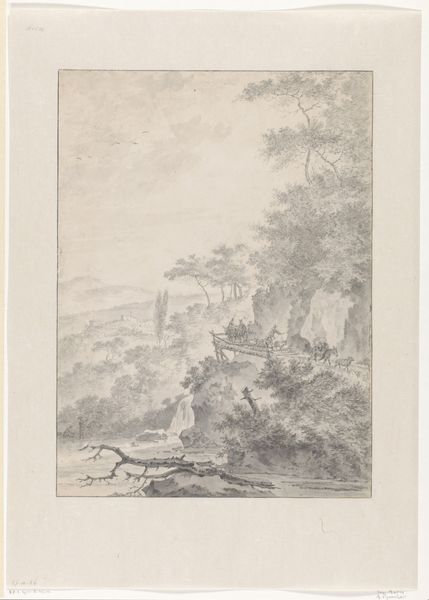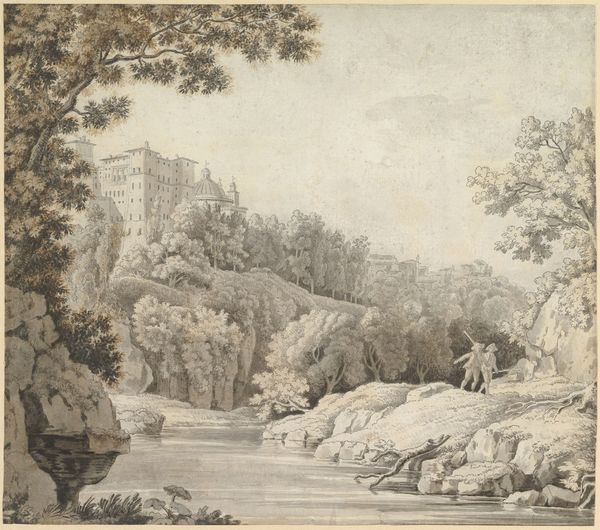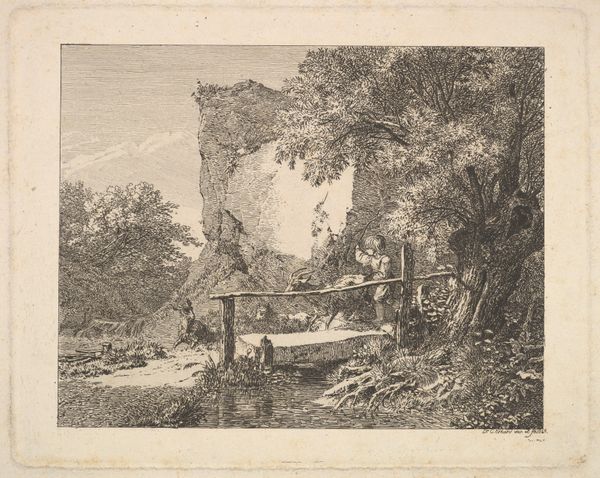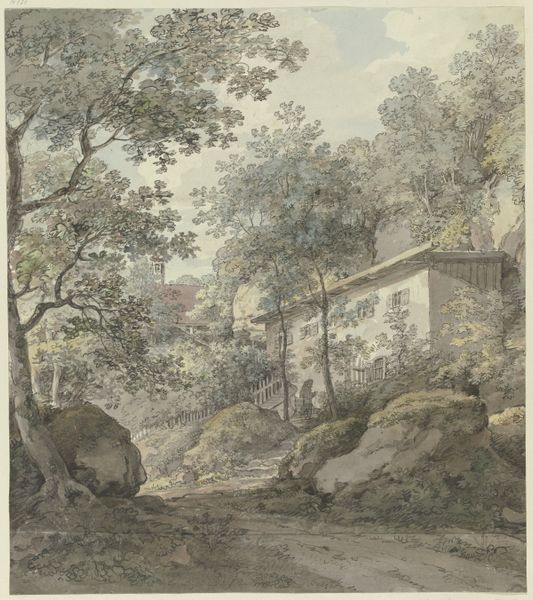
drawing, tempera, print, etching, paper, ink, pen
#
drawing
#
baroque
#
tempera
# print
#
etching
#
landscape
#
charcoal drawing
#
paper
#
11_renaissance
#
ink
#
pen
#
cityscape
Dimensions: sheet: 11 3/16 x 8 in. (28.4 x 20.3 cm)
Copyright: Public Domain
Editor: Here we have Cornelis van Poelenburch's "Landscape with Roman Ruins," dating roughly from 1609 to 1667, utilizing pen, ink, tempera and other media on paper. The composition seems to invite a kind of melancholic reflection on the passage of time, juxtaposing decaying structures with natural beauty. What do you see in this piece? Curator: It's fascinating how Poelenburch captures the Baroque fascination with ruins, doesn’t he? We are observing not simply a landscape, but a commentary on the transience of power and the inevitable decay of even the grandest civilizations. Think about the social context: Northern European artists, influenced by their travels to Italy, frequently depicted Roman ruins. It reflected a cultural desire to connect with, but also to morally reflect upon, the legacy of the Roman Empire and the political implications that followed. Editor: So, it’s not just aesthetic; there's a dialogue happening about cultural influence and political power through the imagery itself? Curator: Precisely. Consider the museum's role as well – how exhibiting this drawing shapes public perception of history. This artwork, even today, frames how we understand our connection to the past. Doesn't the very act of display imply something about the continuing relevance, and perhaps romanticization, of those ruins? The ruins are romanticized in many forms. Editor: It’s almost as though the artist is saying something about the nature of institutions. It seems a very nuanced and potentially cyclical view of institutions both in the past and today. I see that it seems to present a challenge or a lesson that our current structures could one day reflect something similar. Curator: Exactly. It’s in the hands of people and those in control, which is, again, being told through institutions like this very one we speak in. That’s art history! It always leads to another question that's in-itself a discovery. Editor: This makes me consider these historical representations and how institutions change perspectives so dynamically. Thanks!
Comments
No comments
Be the first to comment and join the conversation on the ultimate creative platform.
